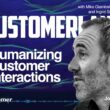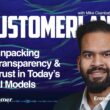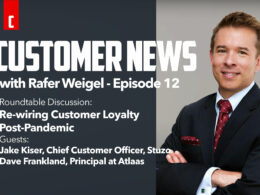You need to FIRST identify Customer Expectations and THEN align your brand and engagement activities to meet and exceed them.
For those of you who read my column regularly, thank you. For occasional readers, would it kill you to look at it a couple times a month? I work hard on them. I try and make them cogent, current, and sometimes even clever. They’re well-written and I never miss a deadline. I mention all that BECAUSE MY EDITOR IS TRYING TO DRIVE ME CRAZY!
Not the work. Or his editing. He emails me stuff. Stuff that makes me CRAZY! Articles. About loyalty, expectations, marketing, consumers, research. But they turn out – and this is purely a professional judgment tempered by years of research and writing experience – on the well-known one-to-ten Stanford-Benet stupidity scale, to weigh in at about a 30!
I express that contempt, usually with an expletive. And a lot of muttering about how they shouldn’t give editorial access to people suffering from delusions of adequacy! Anyway, his most-recent missive finally pushed me over the edge. It was entitled, “How to Measure the Impact of Your Expectation Marketing Efforts.”
He suckered me with that one. It’s an area of great professional interest to me. One I’ve devoted a good deal of my career studying. I won’t name the author-perpetrator. But this article struck a nerve (several, actually) and made my head explode! The author, it turns out, was not a researcher or marketer, describing themselves as, “When I don’t edit articles and make them look good, I do a lot of graphic design.” So yeah, NOT A RESEARCHER. Yikes!
It was grossly misleading, contained much that was apocryphal, and was wildly inaccurate. But it “looked good,” I suppose. It advised that “by skillfully managing customer expectations, businesses can create an experience that not only meets but exceeds those expectations.” The problem there is YOU CAN’T MEET, LET ALONE EXCEED, LET ALONE MANAGE SOMETHING YOU HAVEN’T IDENTIFIED OR MEASURED! I apologize for yelling.
How do you know what consumers expect? Good question. In this instance, the author assumed you’d recognize them when you saw them. Assuming you’ll know or recognize expectations when the time comes is a bad way to start off. In fact, I recently addressed expectations and what real researchers do to measure them, in a column entitled, “Chasing Customer Expectations.” It addressed the problems identifying and measuring consumer expectations, wily, emotional values that don’t reveal themselves by assumption. When it comes to expectations, making assumptions is a really bad strategy on the whole.
The “gaslighting” continued, proposing an alternative, cart-before-the-horse approach: brands should “manage and shape customer expectations to align with the brand’s offerings.” See, it’s a pretty good bet the author hasn’t been in suspended animation for the past 40 years, because that’s not how things work today. CUSTOMER EXPECTATIONS DON’T ALIGN WITH BRANDS. YOU NEED TO FIRST IDENTIFY AND UNDERSTAND WHAT CONSUMERS EXPECT AND THEN ALIGN YOUR BRAND AND ITS OFFERINGS TO MEET THOSE EXPECTATIONS!! Again, apologies for raising my voice.
The author’s “delving into the world of expectations” included 15 items that A) looked like the author googled “popular research techniques,” and then cut-and-pasted them, and B) ARE ALL LAGGING-INDICATORS. For the edification of the aforementioned non-researcher, “lagging indicators” measure events that OCCURRED IN THE PAST. The article’s #1 monitoring recommendation? “Customer satisfaction scores,” an excellent device for seeing what happened in the past BECAUSE THEY ONLY MEASURE THE LAST PURCHASE.
EXPECTATIONS ARE FUTURE-FOCUSED. THEY’RE BASED ON WHAT CONSUMERS WANT. WHAT THEY WANT NEXT. NOT WHAT THEY WANTED THE LAST TIME! Sorry for shouting! But that’s the essence of expectations. The name of the game. The bottom line. The nitty-gritty. The. . . well, you get the idea. Expectations are “leading-indicators” of consumer behavior and correspond with future activity. Like buying your brand (now). And buying it again (next time). And about the next purchase after that. And, thus, expectations are leading indicators of loyalty. What consumers are going to do. But only if you manage them properly. See, no yelling. Well, a little, but mostly calm, reasoned, validated research philosophy and practice.
To measure real expectations, you need to understand how consumers view their Ideal. For the category where a brand competes. It’s a yardstick consumers use to determine how well your brand measures up to their mostly-emotional expectations. Brands that measure up, see success. The brands that don’t, don’t. It’s not a one-size-fits-all proposition. AND YOU HAVE TO IDENTIFY THEM BEFORE YOU CAN MANAGE THEM FOR WHAT YOUR BRAND REALLY NEEDS.
Real expectations can’t be reckoned, divined, assumed, presumed, guessed at, or googled. Real expectations can’t be identified just by asking, social listening, or reviewing customer support interactions – all techniques the author of the make-me-crazy article recommended. You can’t do it with a 5-star rating scale or a ten-point NPS scale. You need dedicated measures. Research into repeat purchase rates, customer lifetime value, CRM, A/B testing, and web analytics (listed in the article as comprehensive measures of expectations) have their place in marketing and branding. BUT NOT FOR IDENTIFYING OR MEASURING CUSTOMER EXPECTATIONS! THEY DON’T DO THAT AND CAN’T BE USED TO DO THAT!!
OK, enough driving me crazy. I can walk from here.
I apologize for the yelling.
I’m hoping reading fewer editor-emails will help.
Photo by Valentin B. Kremer on Unsplash













